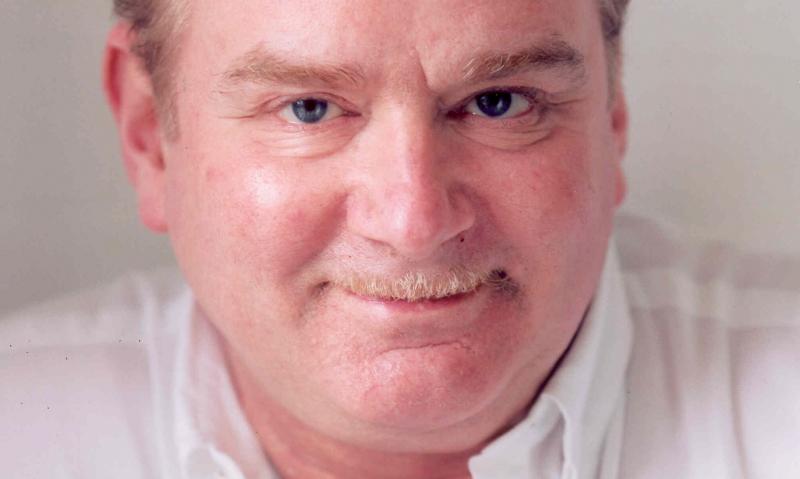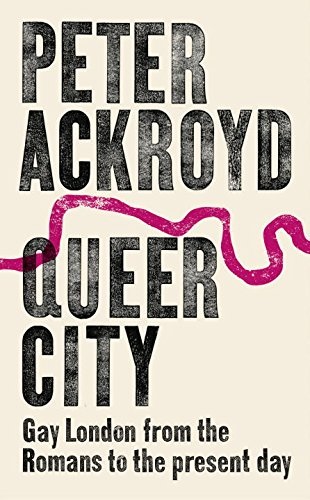Peter Ackroyd: Queer City - London's gay life over two millennia | reviews, news & interviews
Peter Ackroyd: Queer City - London's gay life over two millennia
Peter Ackroyd: Queer City - London's gay life over two millennia
The 'other' history of the metropolis told in magpie detail

2017 is proving the year of celebrating queer. To mark 50 years of the decriminalisation of homosexuality, we are enjoying a host of cultural and historical reminders, from Tate Britain to the British Library, and many locations in between, all affording a degree of prominence that over most of the last century would have been inconceivable.
The historian par exellence of London, and chronicler of Oscar Wilde, Ackroyd provides as full an account as can be expected for a book whose readership is presumably intended as general rather than specialist. At 250 pages, it inevitably falls into the “magpie” school of history, plucking the more colourful characters and episodes out from the archives. It’s such a rich canvas that tracing any particular line is impossible, though themes recur which remain familiar today: the association of homosexuality with the foreign, abroad (the idea that it was “brought over from France”); the different ways in which it was accepted among the ruling classes, church and court (the royal favourites like Piers Gaveston and Buckingham), as opposed to the street; and the periodic appearance of agencies of control, the likes of the Society for the Reformation of Manners or the Society for the Suppression of Vice (a fair number of whose members seem to have succumbed to the iniquities they were trying to root out).
 The sheer breadth of Ackroyd’s picture impresses, capturing the often unruly energy and ferment of the city as it developed over the centuries as a “haven and home of anonymity”. Indeed, the scope of behaviour that he discovers has Ackroyd wondering whether systemisation is possible at all; just as the original LGBT acronym has been extended to an all-inclusive LGBT+, he has to admit at one point that “categories do not apply”. From female gladiators to whipping clubs for ladies, the “wedded brethren” of chivalry to the molly-houses, Chaucer’s Pardoner to Quentin Crisp, all human life is here, however it defines itself – if it cares to define itself at all, that is, when the definition was more often applied by others.
The sheer breadth of Ackroyd’s picture impresses, capturing the often unruly energy and ferment of the city as it developed over the centuries as a “haven and home of anonymity”. Indeed, the scope of behaviour that he discovers has Ackroyd wondering whether systemisation is possible at all; just as the original LGBT acronym has been extended to an all-inclusive LGBT+, he has to admit at one point that “categories do not apply”. From female gladiators to whipping clubs for ladies, the “wedded brethren” of chivalry to the molly-houses, Chaucer’s Pardoner to Quentin Crisp, all human life is here, however it defines itself – if it cares to define itself at all, that is, when the definition was more often applied by others.
It’s certainly not a narrative of historical progress. Ackroyd delights us with the revelation that London probably had as many gay bars in the 17th century as it does in the 21st, and earlier attitudes were often distinctly more accepting. It’s sobering to think that the conditions in which gay people have lived, in relation to society and the law, over the period which remains living memory today were probably as bad as at any time before then (though descriptions of earlier punishment in the pillories are horrific). Nor should we deceive ourselves that 1967 marked any particular sea-change. At times of such "celebration", the voice of Peter Tatchell (who, surprisingly, does not get a mention in Queer City) is as necessary as ever, reminding us as he has recently, on the subject of Scottish law: “Gay sex ceased to be a crime in the UK only four years ago. Unbelievable but true.”
On the subject of post-1967 activism, Ackroyd pays much less attention than he could to the emergence of the Gay Liberation Front and other such organisations – considering that it was the first time in which gay people were openly setting their own agenda in society, rather than having it set for them, that seems a loss. GLF gets less than two pages, the story of AIDS in the 1980s barely more: Ackroyd’s tone verges on the impersonal throughout, and it seems particularly anomalous at that point.
Inevitably, it’s something of a whistle-stop journey, and we can almost hear the shuffling of the library cards, or whatever technological replacements Ackroyd’s researchers – their presence can be felt – may use today. Queer City is a book that often feels more impressive for its intellectual prowess, the thrills of discovery and connection, than rich for its empathy.
- Queer City by Peter Ackroyd (Chatto & Windus, £16.99)
- More book reviews on theartsdesk
The future of Arts Journalism
You can stop theartsdesk.com closing!
We urgently need financing to survive. Our fundraising drive has thus far raised £49,000 but we need to reach £100,000 or we will be forced to close. Please contribute here: https://gofund.me/c3f6033d
And if you can forward this information to anyone who might assist, we’d be grateful.

Subscribe to theartsdesk.com
Thank you for continuing to read our work on theartsdesk.com. For unlimited access to every article in its entirety, including our archive of more than 15,000 pieces, we're asking for £5 per month or £40 per year. We feel it's a very good deal, and hope you do too.
To take a subscription now simply click here.
And if you're looking for that extra gift for a friend or family member, why not treat them to a theartsdesk.com gift subscription?
more Books
 'We are bowled over!' Thank you for your messages of love and support
Much-appreciated words of commendation from readers and the cultural community
'We are bowled over!' Thank you for your messages of love and support
Much-appreciated words of commendation from readers and the cultural community
 Elizabeth Alker: Everything We Do is Music review - Prokofiev goes pop
A compelling journey into a surprising musical kinship
Elizabeth Alker: Everything We Do is Music review - Prokofiev goes pop
A compelling journey into a surprising musical kinship
 Natalia Ginzburg: The City and the House review - a dying art
Dick Davis renders this analogue love-letter in polyphonic English
Natalia Ginzburg: The City and the House review - a dying art
Dick Davis renders this analogue love-letter in polyphonic English
 Tom Raworth: Cancer review - truthfulness
A 'lost' book reconfirms Raworth’s legacy as one of the great lyric poets
Tom Raworth: Cancer review - truthfulness
A 'lost' book reconfirms Raworth’s legacy as one of the great lyric poets
 Ian Leslie: John and Paul - A Love Story in Songs review - help!
Ian Leslie loses himself in amateur psychology, and fatally misreads The Beatles
Ian Leslie: John and Paul - A Love Story in Songs review - help!
Ian Leslie loses himself in amateur psychology, and fatally misreads The Beatles
 Samuel Arbesman: The Magic of Code review - the spark ages
A wide-eyed take on our digital world can’t quite dispel the dangers
Samuel Arbesman: The Magic of Code review - the spark ages
A wide-eyed take on our digital world can’t quite dispel the dangers
 Zsuzsanna Gahse: Mountainish review - seeking refuge
Notes on danger and dialogue in the shadow of the Swiss Alps
Zsuzsanna Gahse: Mountainish review - seeking refuge
Notes on danger and dialogue in the shadow of the Swiss Alps
 Patrick McGilligan: Woody Allen - A Travesty of a Mockery of a Sham review - New York stories
Fair-minded Woody Allen biography covers all bases
Patrick McGilligan: Woody Allen - A Travesty of a Mockery of a Sham review - New York stories
Fair-minded Woody Allen biography covers all bases
 Howard Amos: Russia Starts Here review - East meets West, via the Pskov region
A journalist looks beyond borders in this searching account of the Russian mind
Howard Amos: Russia Starts Here review - East meets West, via the Pskov region
A journalist looks beyond borders in this searching account of the Russian mind
 Henry Gee: The Decline and Fall of the Human Empire - Why Our Species is on the Edge of Extinction review - survival instincts
A science writer looks to the stars for a way to dodge our impending doom
Henry Gee: The Decline and Fall of the Human Empire - Why Our Species is on the Edge of Extinction review - survival instincts
A science writer looks to the stars for a way to dodge our impending doom
 Jonathan Buckley: One Boat review - a shore thing
Buckley’s 13th novel is a powerful reflection on intimacy and grief
Jonathan Buckley: One Boat review - a shore thing
Buckley’s 13th novel is a powerful reflection on intimacy and grief
 Help to give theartsdesk a future!
Support our GoFundMe appeal
Help to give theartsdesk a future!
Support our GoFundMe appeal

Add comment